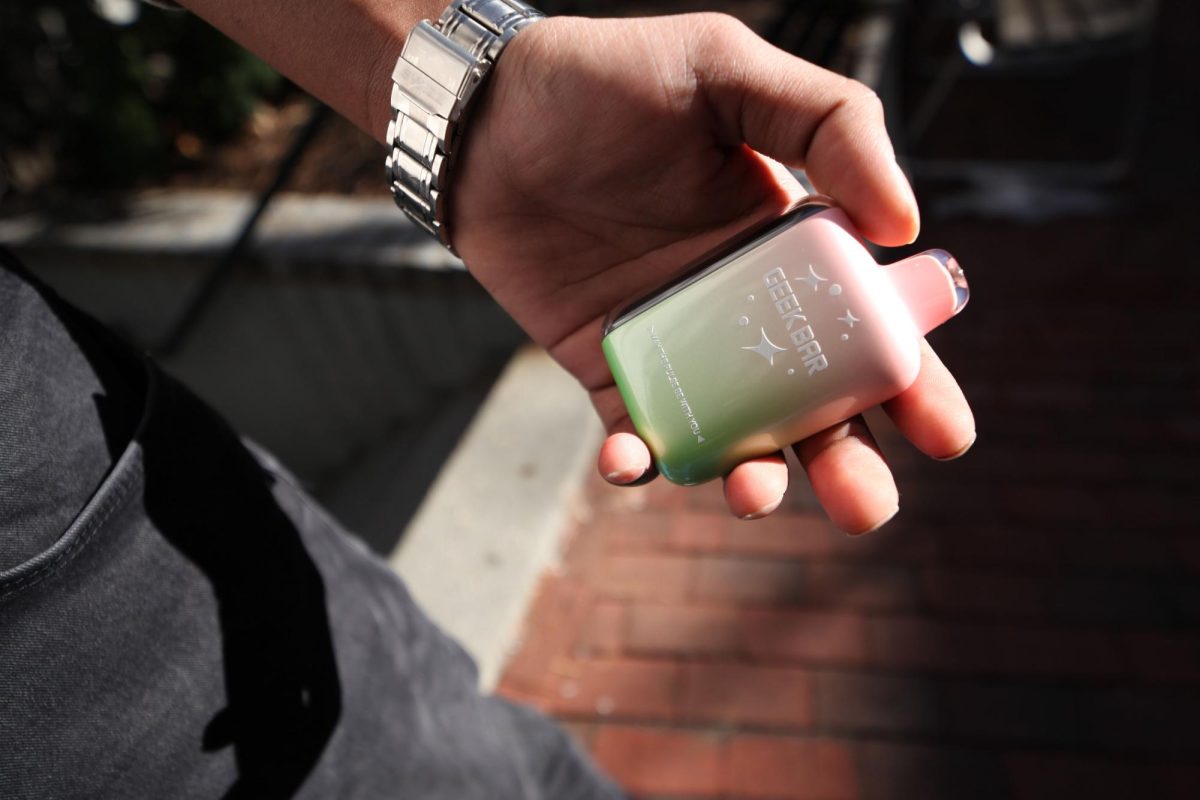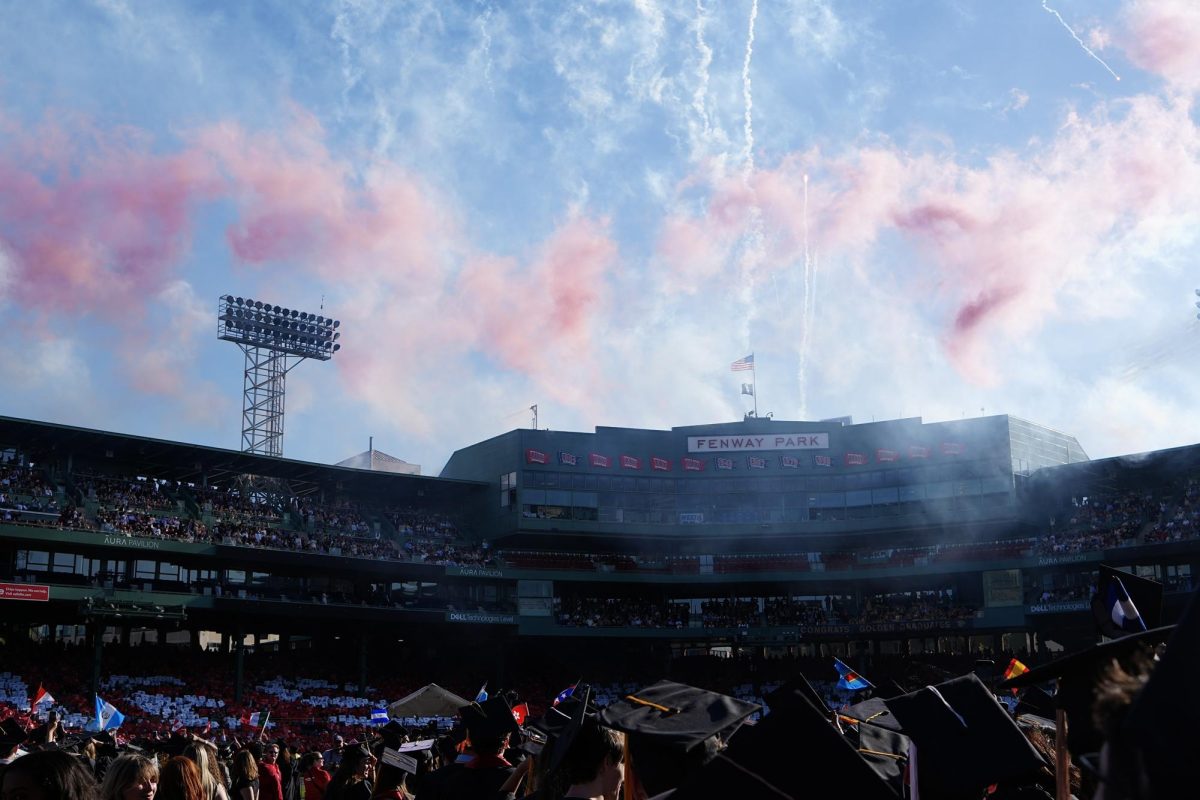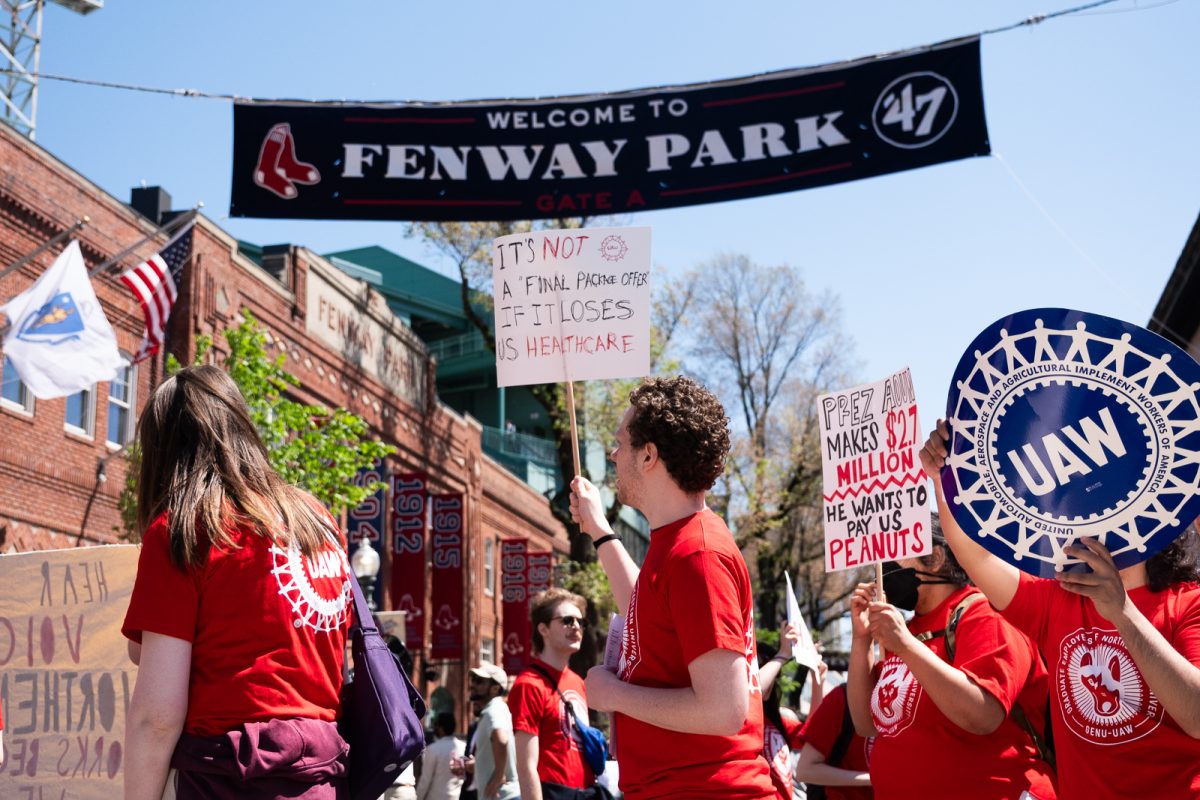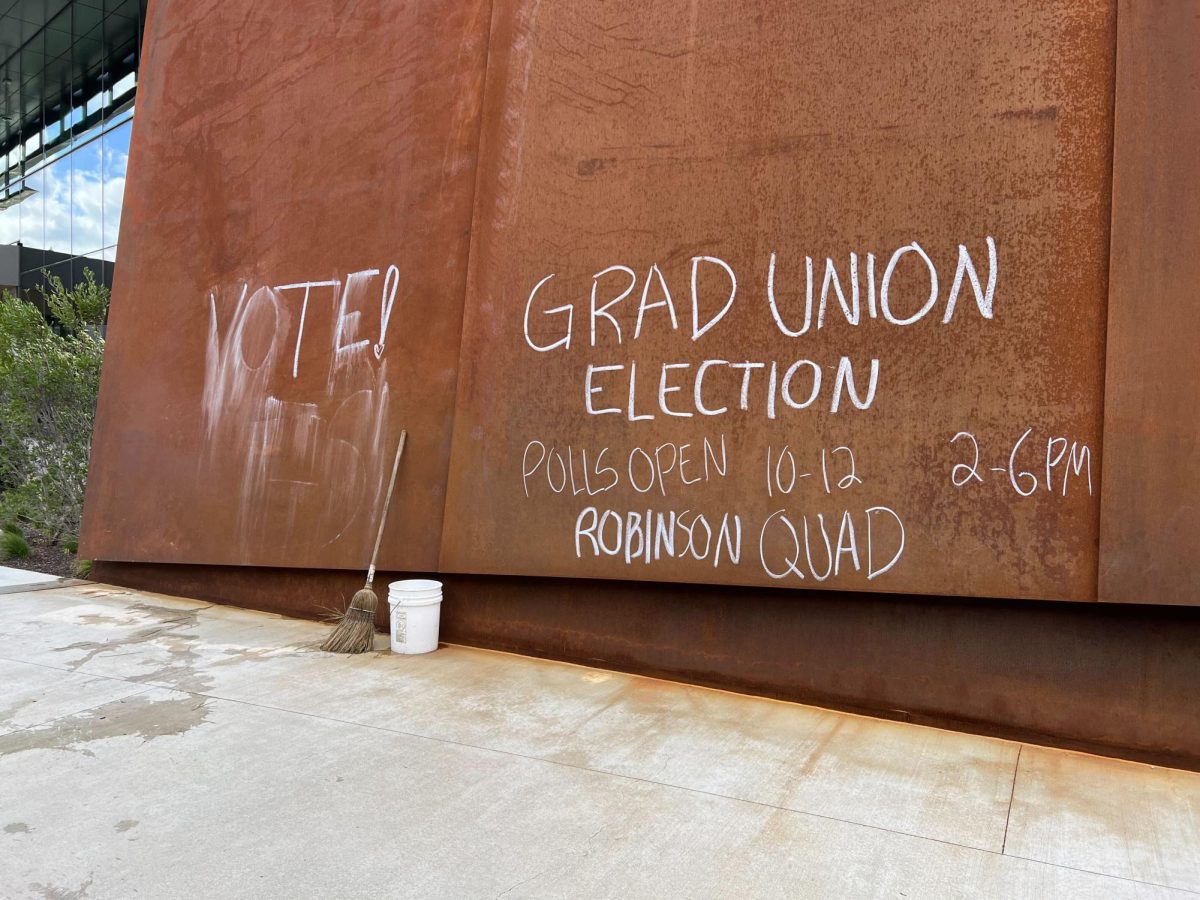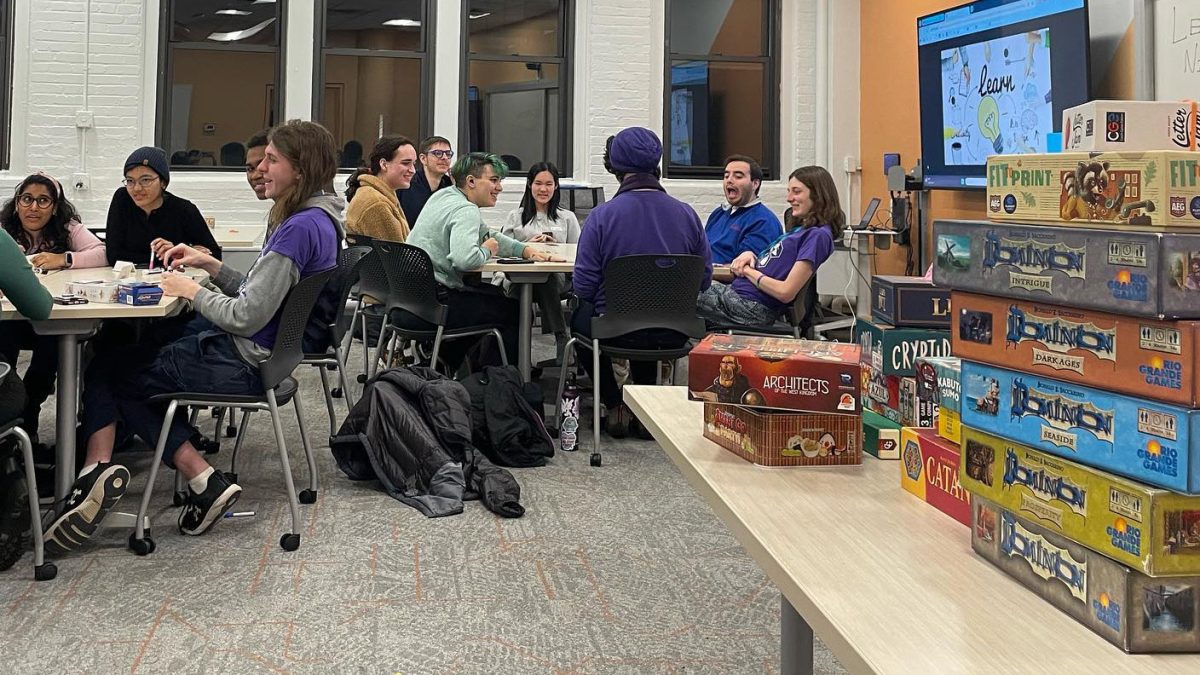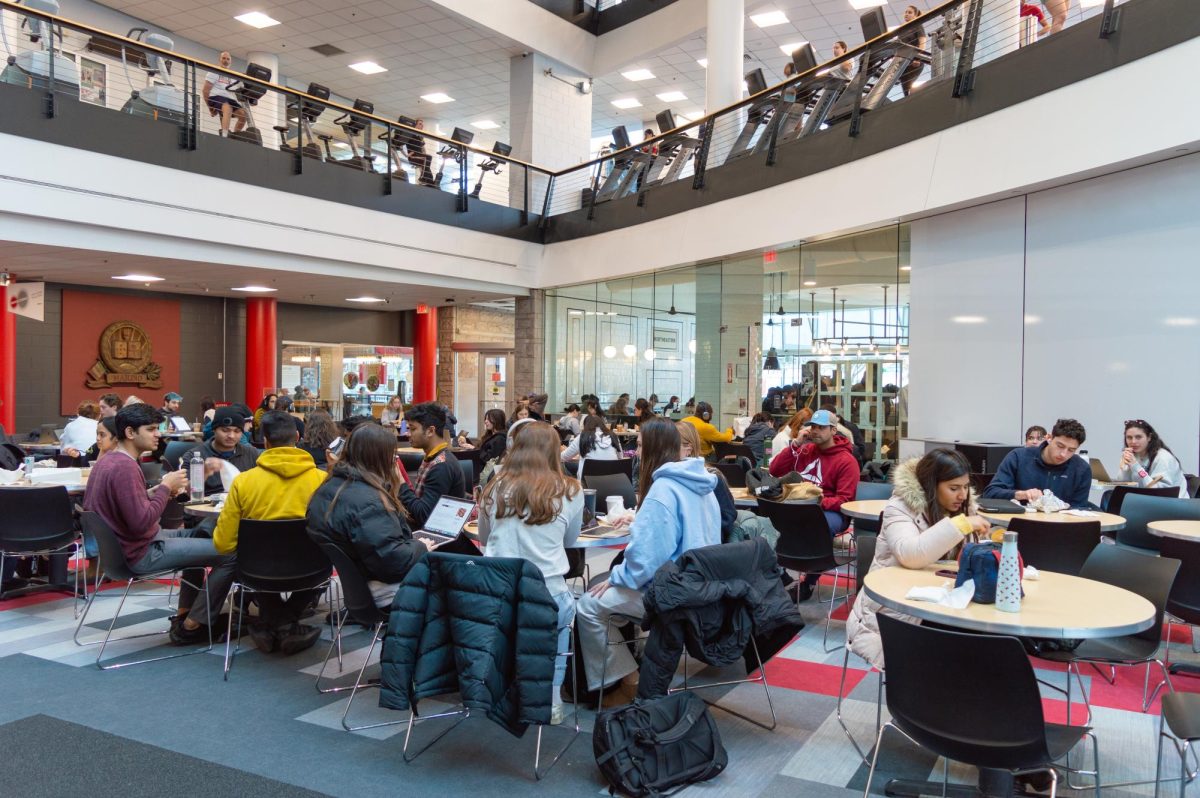By Zack Sampson, News Staff
Northeastern administrators and neighbors of the school renewed last Thursday the persistent debate about student housing, an issue that has proven critical as the university expands with little open space to move into.
“There is a tension between those students of ours who say, ‘Hey, I’m 19, I’m 20, I’m 21. I want to take control of my own life. I want to live off-campus,’ and that’s a competing interest with people in the surrounding communities who say, ‘I prefer if you got your students on campus,’” Ralph Martin, senior vice president and general counsel for Northeastern, said during the meeting in the Varsity Club at Matthews Arena.
Martin said Northeastern currently has enough beds for about 60 percent of the undergraduates living in Boston. He said school officials hope to one day accommodate 75 percent of Boston-dwelling undergraduates in student housing.
When crews complete the GrandMarc project, which includes a new residence hall behind the Huntington Avenue YMCA, Martin said the university expects the capacity for undergraduates living on campus to rise to 67 percent. Suffolk Construction began work on the project this summer.
For comparison, Martin listed the percentages of students living on campus at other schools similar to Northeastern in size and setting. New York University, he said, houses 58 percent of its students on campus; St. John’s University in Queens, N.Y. and Drexel University in Philadelphia each house in the mid-30s; and the University of Chicago houses about 60 percent.
Martin also noted that this year Northeastern officials began to require that all sophomores in the city, not just freshmen, live on campus.
As the Northeastern student body has grown in recent years, Martin said, a space crunch has developed not just with residential space, but with academic and student life areas too.
“We are trying to scale up within the context of having 68 to 70 acres in the city and it presents challenges … whether it’s academic space, research and laboratory space, athletic space, as well as residential space,” he said.
The university’s figures for student housing were contrasted by data compiled and presented by Mike Ross, a Boston city councilor who said the number of Northeastern students living in Mission Hill and the Fenway has continued to rise in recent years.
From spring 2009 to spring 2012, Ross said, the number of Northeastern undergraduates living off campus in the 02120 zip code, which includes parts of Mission Hill and the Fenway, increased 24.2 percent, from 1,080 to 1,341 people. He said during the same timespan the number of students living off-campus in the 02115 zip code, which includes much of the Fenway, also increased by 24.2 percent from 1,559 to 1,936 people.
Ross said he used figures from the Boston Redevelopment Authority census and university accountability reports to determine statistics of off-campus living. Northeastern students make up 27 percent of all undergraduates living off campus in Boston, he said, the largest share for any school in the city.
“I believe it’s a false choice to choose between residents and college students,” Ross said. “I believe we should in this city be able to do both successfully, but we will only be able to do that if every institution does their fair share and builds the housing that they need to house their students.”
The meeting last Thursday included members from the Community Task Force assembled by the Boston Redevelopment Authority as part of the master planning process for Northeastern. The task force meets once a month with Northeastern administrators to discuss the university’s next Institutional Master Plan (IMP). A draft of the college’s next IMP, its guiding document for physical and other policy changes in the next 10 years, is due to the city by the end of 2012.
Student conduct issues — namely rowdy parties, drunkenness, littering and vandalism — and the displacement of families are chief concerns for neighbors of Northeastern, who say they have seen an influx of students into their communities as the university has grown in the last couple decades. Housing prices in the area have also risen, residents said.
Calling the steady flow of students into surrounding communities a “life-and-death issue” for a neighborhood, Patricia Flaherty, a community task force member representing Mission Hill, said, “It’s not just that students came in and they were added, people got displaced and people are getting displaced every day.”
In terms of student misconduct off-campus, John Tobin, vice president of city and community affairs at Northeastern, said the school tries to maintain a proactive approach. But he said sometimes officials must react to problems.
Tobin listed several things Northeastern students and administrators do to help in neighborhoods. He said university employees speak to landlords and work with the Boston Police Department to address problem properties and misbehavior, such as parties off campus.
Residents at a previous community meeting raised the issue of what they know to be a particularly problematic spot called “Animal House” near Symphony Road and Hemenway and Gainsborough streets. Tobin said Northeastern officials and Boston Police spoke to the landlord of the properties at the center of the area, where residents said students break tree limbs, litter in landscaped areas, key cars and scream in public. He said the landlord plans to take steps to stop issues around the spot.
Many of the concerns raised at the meeting last week were part of a common refrain, one local resident and state politician said.
“Because in ‘99 and 2000 we kind of heard the same things as we’re hearing these days right now,” State Rep. Jeffrey Sanchez, a Democrat of Jamaica Plain, said of the last Northeastern master planning process. “We hear the words reciprocity, sustainability, we hear the words working together, but we also hear that there’s a difference in philosophy on where we are on housing and impacts.”
Sanchez said it is difficult to discuss issues such as the effects of off-campus student living with Northeastern officials.
“The impact has gotten greater,” he said. “It’s harder to communicate with Northeastern now more than ever. It’s harder to get through to leadership so that they realize that the impact that the institution has on the community has increased more so than ever. It is too expensive to live [in] the community.”
One Boston resident and Northeastern alumnus, however, said the issue of a housing crunch is not unique to Northeastern. Derek Shooster, 23, who said he worked on co-op at the BRA, said the City of Boston as a whole has a shortage of residential space.
Shooster also questioned the figures presented by Ross, saying they did not date back far enough. The first year reported in the statistics, 2009, was when International Village opened, Shooster said. Therefore, he said, the numbers do not provide an idea of how off-campus housing changed before and after the latest dorm addition on the Northeastern campus.
Though he admitted he took offense to people targeting his alma mater, Shooster suggested that perhaps the community task force meetings were not the best venue to air concerns about housing in local neighborhoods.
“I don’t think it’s so much a problem of pointing a finger at Northeastern and saying, ‘You need to do more,’” he said. “I think Boston in general needs to have a serious discussion about what to do to increase housing inventory overall.”
Sidebar: “Cabot Center, Columbus lot vetted for rebuilding”
University officials are targeting a number of underutilized properties that could one day be home to mixed-use academic and residential facilities for Northeastern’s growing student body, an architectural planner said during a community meeting last week.
Patrick Tedesco, a planner with the firm Chan Krieger NBBJ, which the university hired for its next Institutional Master Plan process, highlighted some ideas school officials are considering for physical redevelopment on campus during a Community Task Force meeting last Thursday.
The plans, however, are only preliminary, and he said they are just being explored for feasibility. Tedesco said it is unlikely that all ideas will be addressed in the next master plan.
For instance, the North Lot and the science quad, including the Mugar Life Sciences Building, Hurtig Hall and Robinson Hall are being explored as possible sites for redevelopment.
In the surface lot behind Ryder Hall, Tedesco said, planners are vetting the possibility of adding a mixed-use 12- to 15-story tower. The first three to four floors would contain academic space, and the top floors would host 300 to 350 new beds, he said.
Burstein and Rubenstein halls, which are now collectively home to 200 beds, could also be redeveloped, he said. But plans for this site are in especially early stages, according to Tedesco.
A possible new use for that area, Tedesco said, would be a mixed-use tower about the size of West Village H, 18 to 22 stories. He said it would contain 400 to 450 beds, anl increase of 200 to 250 beds over Burstein and Rubenstein.
Planners are also exploring a two-part redevelopment with the Cabot Center and the Gainsborough Garage, Tedesco said. Gainsborough could be transformed into a new athletic facility, and Cabot could be replaced by another mixed-use building.
Another project under consideration for the next master plan concerns the Columbus Surface Lot, which Tedesco said planners believe can accommodate 600,000 square feet in academic space.


